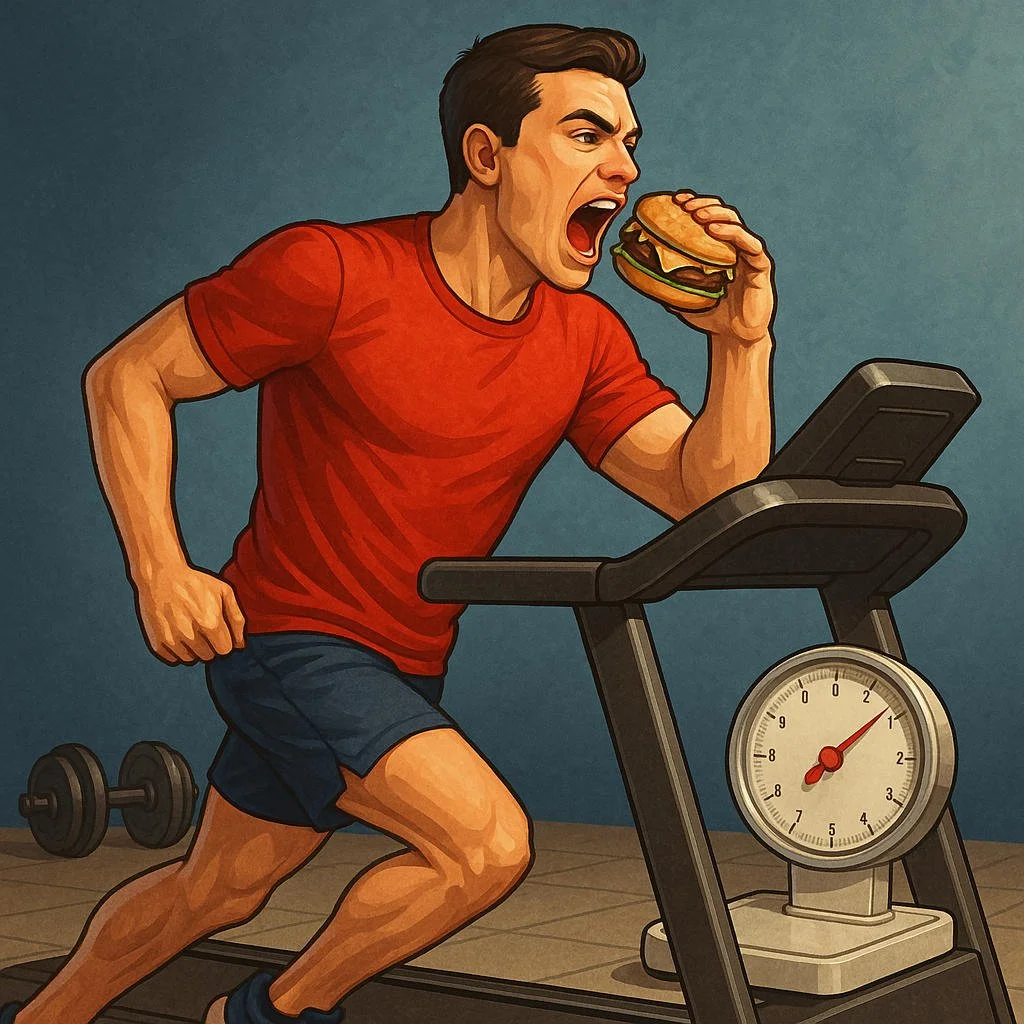How Do Competitive Eaters Not Get Fat? The Surprising Reality Behind All Those Hot Dogs
First thing: they can gain weight… but most work hard not to
On TV or YouTube, you see someone crush 60 hot dogs in 10 minutes and somehow still look lean in photos. It feels like they’ve broken the laws of physics.
They haven’t.
Competitive eaters live under the same rules as everyone else: over time, you gain or lose weight based on calories in vs. calories out. The difference is:
The huge binges you see are rare events, not daily habits.
The rest of their week (and year) is often extremely controlled.
Many of them train like athletes and burn a ton of energy.
Some are genetically predisposed to handle large meals and stay leaner.
And honestly: some competitive eaters do gain weight, have health problems, or retire heavier than they started. The lean, shredded ones are the small visible tip of a big, messy iceberg.
This is not a “hack” for normal people. It’s a specialized, extreme sport with real risks.
Rule #1: Energy balance still wins
At the most basic level:
If, over weeks and months, you burn more calories than you eat, you lose weight.
If you eat more than you burn, you gain weight.
A single competition might be 10,000–20,000+ calories in one sitting. That’s absurd… but:
They might only compete at a handful of big events per year, plus a small number of smaller contests.
Around those days, they slash calories or fast.
They often train hard and stay extremely active.
So across a full week or month, their average daily calories may still end up in a normal range for their size and activity level. The body doesn’t care if you eat 2,000 calories per day for 7 days or 500 one day, 1,000 the next, 12,000 on Saturday, and 500 on Sunday—what matters is the total over time.
It’s extreme, but it’s not magic.
What competitive eaters actually eat off camera
The big secret is that many of them are not “foodies” in everyday life. Between contests, a lot of them live like this:
Very clean, controlled diets: lean protein, vegetables, whole grains.
Low-calorie days before and after events to offset the binge.
Some use intermittent fasting (long stretches without food).
They often avoid junk food and sugar most days.
They may track calories or at least have a tight sense of portion size.
That viral clip of 100 burgers? That might be the only ridiculous meal they have that week—or that month—surrounded by days where they eat less than a typical person.
To put it bluntly: the average “normal” person who eats fast food and snacks casually every day often takes in more calories on average than a competitive eater who is ultra-strict 6 days out of 7.
Training like an athlete: yes, many competitive eaters work out hard
Competitive eating doesn’t look like a sport, but the successful ones often:
Do regular cardio (running, cycling, rowing, etc.)
Lift weights to maintain muscle mass
Stay generally active and walk a lot
Spend time on breathing control, core strength, and posture
Muscle is metabolically active. Someone who’s:
Fairly muscular
Training several times per week
Moving around a lot (high daily steps)
…will burn significantly more calories per day than someone sedentary.
So if they:
Burn, say, 2,800–3,500 calories on an active day
Eat 1,600–2,000 calories on their “cutback” days
Then even a huge contest meal here and there can be swallowed by the math over a month.
Stomach capacity vs body fat: not the same thing
A common misconception is:
“If they can eat that much in one sitting, they must get fat.”
But stomach capacity and fat storage are different issues.
Competitive eaters “train” their stomachs to stretch more by:
Drinking large amounts of water in a controlled way
Eating big volumes of low-calorie foods (like vegetables)
Practicing with large meals occasionally
This builds short-term capacity without necessarily adding tons of body fat—because much of that practice volume is low calorie, and overall weekly calories are still controlled.
It’s like training flexibility: you can get better at touching your toes without gaining weight. They’re training their stomach and swallowing mechanics, not just “eating all the time.”
That said: people trying to copy this at home can easily overshoot and end up with weight gain and stomach issues. Again, this isn’t a lifestyle to imitate.
Genetics: some bodies handle big meals better than others
There are real individual differences in:
Basal metabolic rate (BMR): how many calories you burn at rest
Appetite signaling: how hungry or full you feel after meals
NEAT (non-exercise activity thermogenesis): fidgeting, pacing, micro-movements that burn energy without you noticing
How your stomach is shaped and how much it can stretch
Some competitive eaters:
Have naturally higher metabolisms
Fidget, move, and pace constantly
Actually feel pretty normal or even hungry a day or two after a big contest
If you gave the same diet and schedule to 100 random people:
Some would stay fairly lean
Some would gain weight quickly
Some would crash energy-wise or have digestive problems
The ones who become famous in competitive eating are self-selected freaks of nature in this specific skill. You are literally seeing the outliers.
How often do they actually compete?
Another important piece: how frequently they do these big events.
Even top names don’t do 20 massive 10,000+ calorie contests every week. They might:
Have a few big, televised contests per year
Sprinkle in some smaller events or “stunt” videos
Do some training runs that aren’t as extreme as the main events
Rest of the time? They may be:
Eating very controlled meals
Doing maintenance training
Letting their digestive system recover
So while we see “insane eating” constantly online, for the actual human being, these are spikes, not the baseline. The camera reels make it look like everyday life; it isn’t.
The parts you don’t see: health issues and risks
The question “How do competitive eaters not get fat?” misses another big angle:
What does this do to their health, even if they’re not visibly overweight?
Possible risks can include:
Digestive damage: chronic stretching, reflux, discomfort
Nausea, vomiting, and choking risks during events
Blood sugar spikes from massive carb loads
Strain on the heart and circulatory system from sudden high-volume meals
Possible long-term issues with appetite regulation or normal eating patterns
Some competitive eaters retire or cut back because their bodies simply cannot handle it long-term, regardless of their weight.
So the lean, smiling person holding a trophy might be dealing with a lot of physical stress off-camera.
So why don’t they just become obese?
Summing it up, competitive eaters don’t automatically become huge because:
Energy balance still rules:
They compensate for big binges with lower intake and higher activity the rest of the time.Contest meals are rare spikes, not daily life:
The human body can handle the occasional huge calorie load if the weekly and monthly total isn’t consistently excessive.They train and move a lot:
Many competitive eaters treat it like a sport, with structured workouts and conditioning.Genetics & body type help:
The ones who stay lean with this lifestyle are the ones we see; others either don’t make it to the top or don’t stay there long.They are often extremely disciplined:
The irony is that competitive eaters are usually not “out of control” around food all the time. Outside of events, they’re often more disciplined than the average person.
Should a normal person try to eat like a competitive eater?
Short answer: absolutely not.
It’s very easy to get all of the downside (weight gain, digestive issues, health problems) without the genetics, discipline, or training.
It can mess with your relationship with food and lead to disordered eating patterns.
The “I’ll just eat a massive cheat meal and starve later” mindset is often mentally and physically rough for most people.
Competitive eating is an extreme niche sport with specific training, planning, and risk. It’s interesting to understand, but it’s not a blueprint for staying skinny while binging.
Key takeaways
If you just want the core answer in a few points:
Competitive eaters don’t magically “not get fat.” They manage their average calories over time.
Off-camera, many eat strict, low-calorie, “clean” diets most days.
They often do serious physical training and maintain high activity levels.
Genetics, stomach capacity, and metabolism play a huge role in who can do this without ballooning.
The lifestyle comes with real health risks and is not something to copy at home.
They’re not breaking physics—they’re playing on the very edge of what physics (and a human body) will tolerate.








